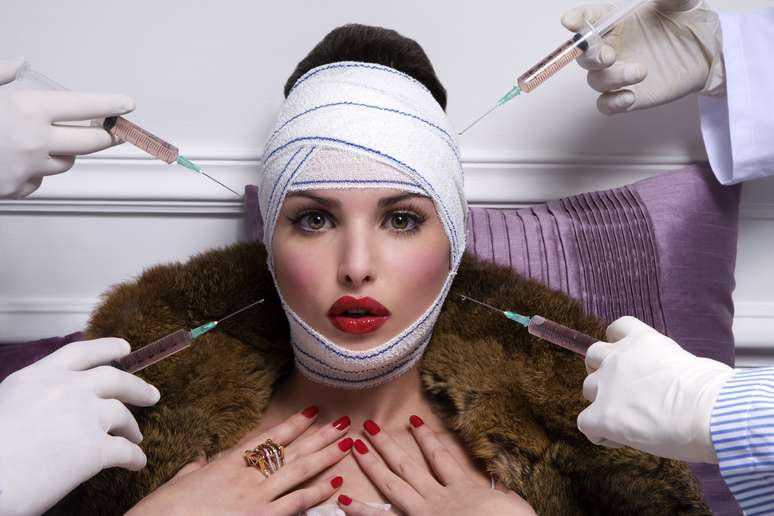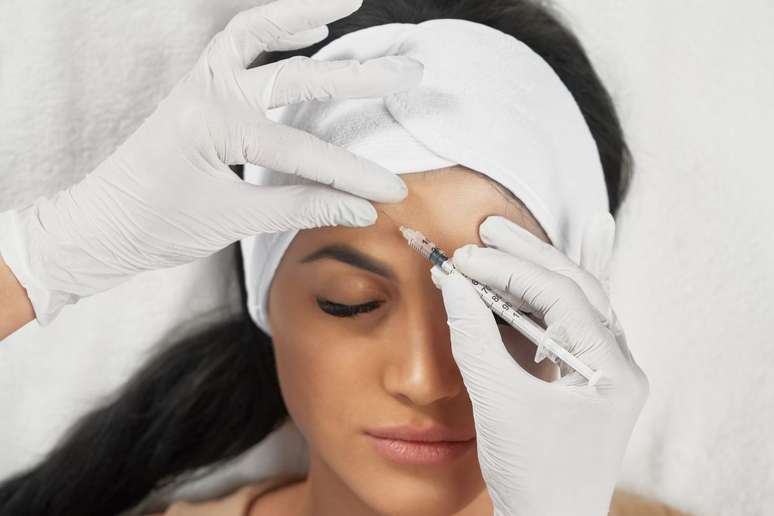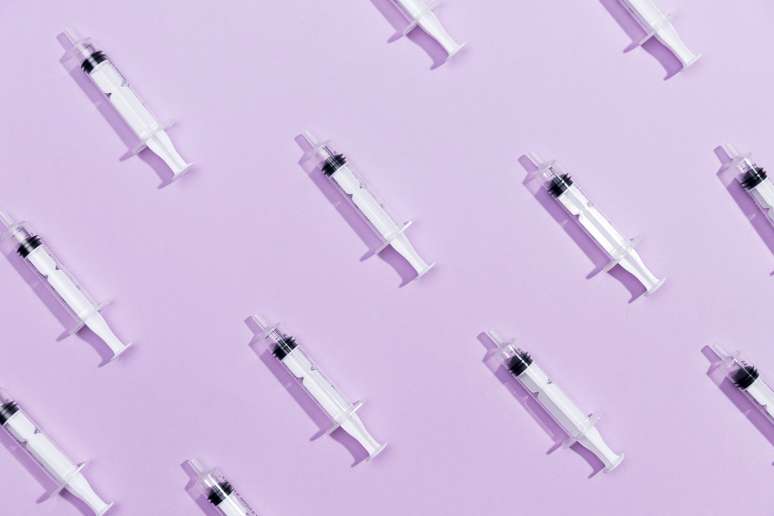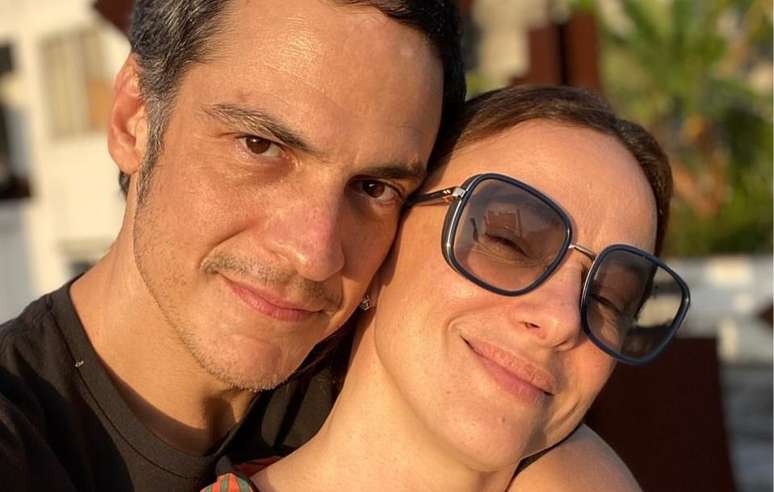Do the cons of using Botox as prevention outweigh the pros?
The concept of “preventive Botox” was perhaps invented by the same creators of the term “anti-aging”. That’s because the idea of using neuromodulators to prevent (rather than correct) wrinkles is equally ambiguous and polarizing.
Preventive Botox* “is not a real thing with a defined definition,” says the dermatologist Ranella Hirsch on his Instagram page, dedicated to debunking the myths of dermatology.
In other words: it’s marketing. The marketing is so well done that the result is a hashtag with more than 60 million views.
After years of hearing and reporting about preventative Botox, we’ve come to accept it as simply another skincare maintenance tool: You put on retinoids, you use sunscreen, you get Botox… all for the sake of fewer wrinkles. in the future, right?
The truth is that there are some studies (albeit in small numbers) that highlight the benefits of preventative Botox. But there are also patients who report atrophied muscles because they started Botox at a young age. And there are doctors who place limits on injecting neuromodulators into 20-year-olds.
So, here is a guide with everything you need to know.
*When we talk about “Botox” here, we are referring to neuromodulators in general. Because Botox was the first to be marketed, the brand is often used as a generic for the entire category, which now includes Botox, Dysport, Xeomin, Jeuveau, and Daxxify.
What is the difference between preventative Botox and regular Botox?
“The idea is to apply the product as soon as the first wrinkles appear. But only a small amount is injected, to soften these wrinkles before they deepen,” explains the dermatologist Otavio Macedo.
By preventing muscle activity, these neuromodulators prevent the formation of wrinkles on the skin, thus preventing the formation or deepening of expression lines. In functional use they also prevent migraines, muscle spasms, sweating and more. Therefore, it can be argued that All Botox is preventative.
In the modern lexicon, however, “preventive Botox” implies something more specific: injecting highly mobile areas of the face to soften muscle contractions, but not completely erase them. The goal is to prevent dynamic wrinkles (which appear with expression) from becoming permanent as the face relaxes.
Does preventative Botox work?

If you expect Botox to stop the aging process, you will be disappointed. Getting Botox in your 20s won’t stop you from having wrinkles in the future. They are a part of life and also occur for reasons other than muscle movement, such as failure. Neurotoxins were not designed to prevent all wrinkles: the nasolabial wrinkles are there to prove it.
But leaving wrinkles aside, there is another aspect of prevention to consider with Botox: treatments that “make us feel more comfortable and confident”, such as using the toxin to stop teeth grinding, for neutralize the “permanent frowns” that do not correctly communicate how we feel. , to relax tense muscles that promote poor posture, to suppress anxiety-induced sweating: these versions of preventative Botox, according to Dr. Ranella herself, are “100% worth it.”
When is the right time to start Botox?
This is where things get a little funny. There are two main schools of thought regarding the ideal age to start preventive Botox: while some doctors insist on administering it before wrinkles form, others prefer to wait until there is a hint of a true resting line (when the face is relaxed).
Doctors in the first camp (those who inject unwrinkled faces) will look to see where muscle activity is affecting the skin in noticeable or disproportionate ways by observing patients in casual conversations and having them frown, smile big, pout and pouting your eyebrows on command. Subsequently, any dynamic expression lines, which may remain imprinted in the skin over time, will be lightly applied with Botox.
For this group, since we all wrinkle differently, based on the genetic quality of our skin, history of sun exposure, and other factors, there really is no “best” age to intervene. You just have to “start before your skin wrinkles.”
Taking a more conservative approach, the second group will never apply Botox to a wrinkle-free face, believing there is no ethical reason to do so. Therefore, the best age to start the application is when you start to see the first signs of an expression line that starts to become slightly marked when you do not move your face.
“The risks of starting this treatment too early are unclear, but studies have shown that there is a possibility of producing antibodies, causing this patient not to respond to botulinum toxin in the future. In addition, of course, to the waste of money, time and a frozen appearance,” says the dermatologist Dr. Paola Pomerantzeff, member of the Brazilian Society of Dermatology.
The best areas to treat (and avoid) with preventative Botox

The only place most ethical doctors are willing to use preventative Botox is in the upper third of the face, and only after carefully analyzing the patient’s face.
They then treat the corrugator muscles (which pull the eyebrows down and inward) to prevent the lines between the eyebrows from deepening. Systematic application of a small neuromodulator to this area may also help keep eyebrows in a youthful position and perhaps delay the heaviness and sagging that ultimately leads some people to undergo surgery (blepharoplasty, brow lift or both).
If you want, it is best to start fighting forehead wrinkles at a young age. In fact, doctors are often reluctant to apply Botox to the forehead later in life, as the activity of the muscles that lift when sagging skin is in play can cause the eyebrows to droop, crowd the upper eyelids, and sometimes even obscuring them.
Crow’s feet are a tricky area to treat preventatively. Some dermatologists believe that you can actually distort someone’s smile by over-treating crow’s feet.
Preventive Botox: yes or no?
The case for
Neuromodulators are well studied and there is ample evidence to support their long-term use, but we are in new territory with preventative Botox. We don’t have specific long-term data for someone who starts treatment at age 21 and does it twice a year, every year.
The closest thing to this is a 19-year case report of identical twins, starting in the early 1990s. A twin, living in Los Angeles (USA), has received Botox injections every four to six months for 19 years. His sister, in Munich (Germany), has received only four treatments in all 19 years.
The twin with more frequent Botox fared better in terms of skin smoothness, not developing static lines in treatment areas while her sister formed wrinkles on her forehead and around her eyes. None of the women used retinoids or other cosmetic treatments during the study. Although the study did not take into account many other aspects (geography, lifestyle, UV exposure), it served to reinforce the need for preventative Botox.
Proponents of preventative Botox often point to the work of Shannon Humphrey, a board-certified dermatologist in Vancouver, Canada. “In vitro models show that fibroblasts produce collagen when incubated with a neuromodulator,” she says. Translation: Botox can also increase collagen production.
The case against
Even after a single dose, muscles treated with Botox may thin. The forehead muscle is already very thin and is the only muscle that lifts the upper part of the face.
If very high doses are used on the forehead, for continued periods of time, it can definitely cause atrophy. The eyebrow ligaments begin to loosen, causing the eyebrows to droop and the skin to sag. The best way to avoid unwanted atrophy is to use light doses of neuromodulator.
Additionally, excessive use of Botox can create resistance, which is when the body forms antibodies against the drug, dulling its effect. One of the biggest causes of these neutralizing antibodies is repeated exposure. Although resistance is incredibly rare (a 2023 meta-analysis cites an incidence of 0.5%), some doctors worry that if we start Botox too early in life, it may eventually stop working for us, and perhaps just when we need it more (not that someone Need Botox, of course).
Source: Terra
Ben Stock is a lifestyle journalist and author at Gossipify. He writes about topics such as health, wellness, travel, food and home decor. He provides practical advice and inspiration to improve well-being, keeps readers up to date with latest lifestyle news and trends, known for his engaging writing style, in-depth analysis and unique perspectives.









